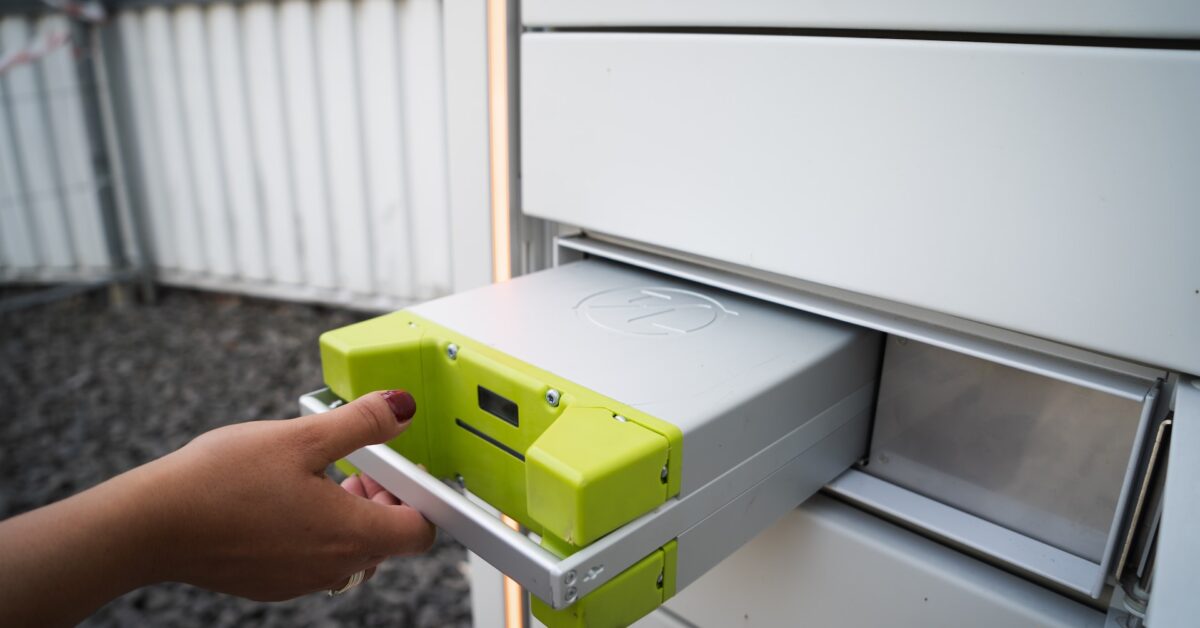Energy storage is a crucial technology for integrating renewable energies into power systems. It makes the power system more reliable and efficient by providing spinning reserves, frequency control, load leveling and shifting, voltage regulation and VAR support, power quality improvement and relief of overloaded transmission lines.
Various storage technologies for power system applications have been developed or are under development. They include mechanical, chemical, electrochemical and thermal storage methods.
Battery
A battery is an energy storage technology that combines chemical, kinetic and thermal energy to store energy in a form that can be used later. It is one of the most widely deployed and versatile energy storage technologies.
A typical battery consists of two terminals, called anode and cathode, each made of different materials separated by an electrolyte. When the electrodes come into contact with the electrolyte, chemical reactions create a flow of electrical energy to a device (for example, a laptop or light bulb).
The voltage, or force at which the reaction pushes electrons through the cell, measures how much electricity the battery can produce. The higher the voltage, the more work, the same number of electrons can do.
Batteries are a vital energy storage technology in helping balance fluctuations in supply and demand on the electric power grid. They can help the grid operate more efficiently, avoid brownouts during peak demand and allow renewable energy to be deployed cost-effectively. They also offer a rapid response to electricity demand and can defer or avoid costly investments in transmission and distribution.
Hydrogen
Hydrogen is a versatile energy storage technology, able to produce, store, move and use various forms of energy. It can be made from multiple sources, including renewables, nuclear, natural gas and coal.
Hydrogen is suitable for high-power applications, unlike batteries, which can only store power for a few hours. In this sense, hydrogen is ideal for heavy vehicles that use large amounts of energy and must be refueled quickly.
Hydrogen and fuel cells are absorbed in the transport sector because they offer higher volumetric and gravimetric energy densities than gasoline or diesel. It means a vehicle can travel more kilometers with less weight than an equivalent electric vehicle with a battery.
While liquid hydrogen has been used for many years to fuel rockets, this technology is complex and expensive. One way to make liquified hydrogen more affordable is to store it in salt caverns, which are naturally occurring.
Fuel Cells
Via two redox processes, fuel cells, which are electrochemical devices, transform the chemical energy of hydrogen and oxygen into electricity. They differ from most batteries in that they need a continuous source of fuel and oxygen to sustain the response, rather than a battery that only requires an intermittent recharge.
They are a clean, efficient, reliable, and quiet power source for homes, businesses, critical facilities, and vehicles. They do not need to be refueled periodically like batteries. They are more energy-efficient than traditional power plants (which can produce only about one-third of their energy efficiency in cogeneration systems).
The operation of any fuel cell system depends on its operating temperature, which limits both the chemical activity of the fuels and the value of the activity promoters or catalysts. Low temperatures, in particular, can reduce a fuel cell’s capacity and its lifetime.
Electrochemical
Electrochemical energy storage systems are:
- Critical enabling technologies for renewable energy.
- Energy conversion, conservation and storage.
- Pollution control/monitoring.
- Greenhouse gas reduction.
These systems offer high efficiencies, modular construction, and produce low chemical and noise pollution.
An electrochemical cell is a device that triggers oxidation or reduction processes with electrical energy. Each cell has two electrodes, conductors through which electrons enter or leave. During a reaction, the anode loses electrons in an oxidation process, and the cathode gains electrons in a reduction process.
The standard galvanic cell has a positive cell potential (Edeg) because the anode loses electrons in oxidation, and the cathode gains electrons during a reduction process. This results in an equilibrium reaction between the ions at the electrodes that produce electricity.
In an electrochemical battery, a solution of cations and anions must be separated with a membrane or porous plug to allow the movement of ions between the electrodes. This diffusion can cause a liquid junction potential, leading to the battery’s power capacity degradation with time. It is a significant challenge that requires materials, interface designs, and power controls to be optimized at the fundamental level for maximum cell performance (efficiency and degradation) and lifetime.
Electromagnetic
Electromagnetic energy storage technologies are essential to the world’s electrical power system. Electromagnetic storage technology includes batteries and supercapacitors.
Batteries use a combination of chemical metals to form positive and negative electrodes separated by a chemical medium called an electrolyte. The electrolyte acts as a conduit for the positive ions from the electrodes while an electric current flows through the battery.
Battery technology has a long history and is commonly used in microelectronics and electrical devices. These include cellular phones, computers, clocks, and toy cars.
However, batteries have several disadvantages, including high cost, low efficiency, and complicated maintenance. They also have environmental impacts, such as releasing carbon dioxide emissions.

